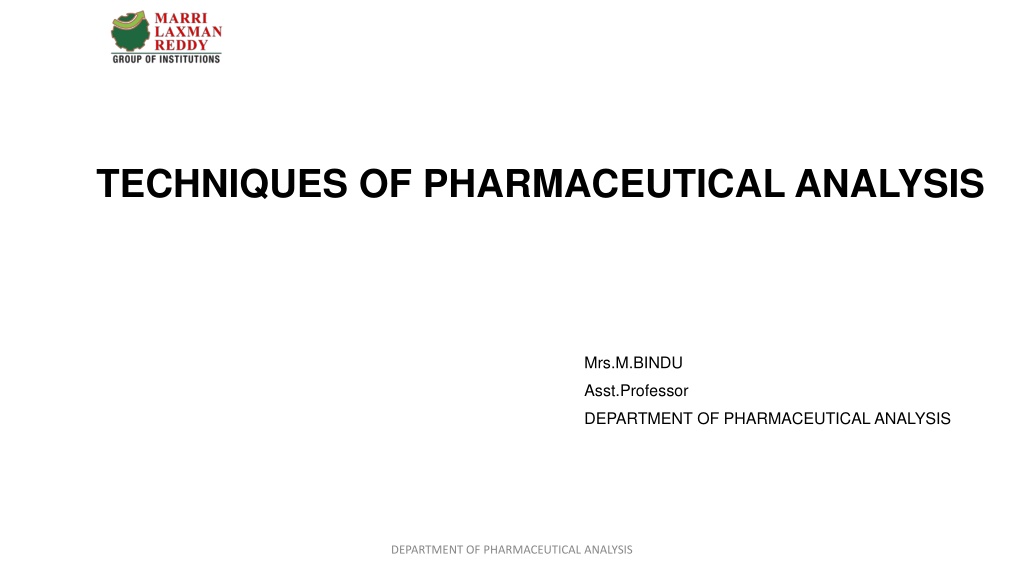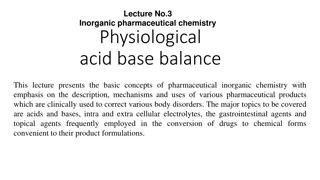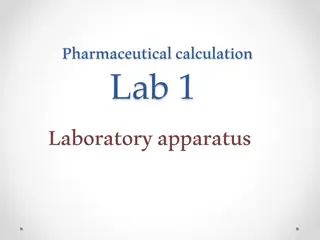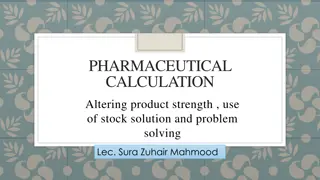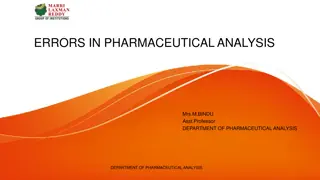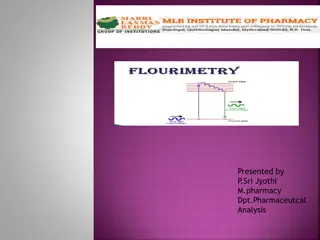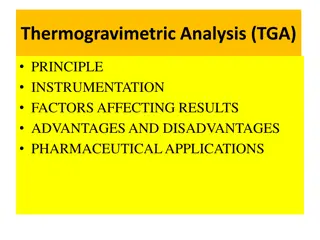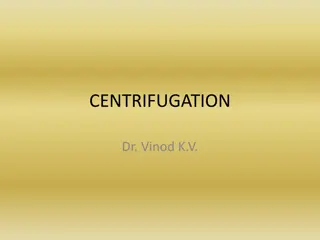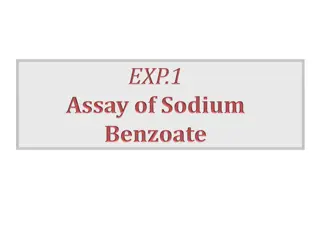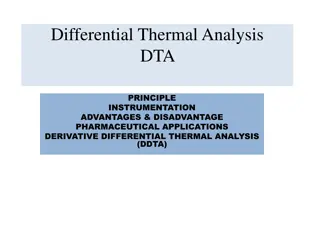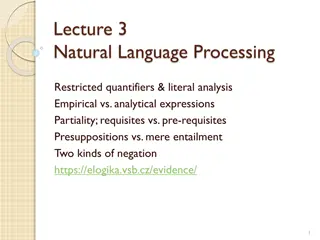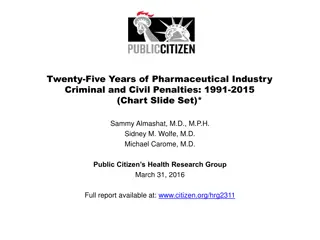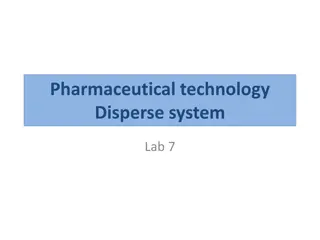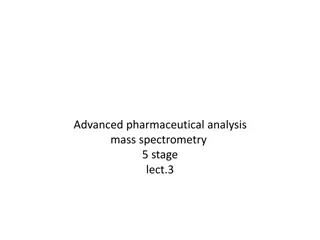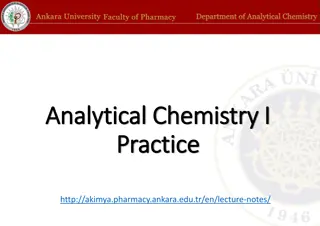Analytical Techniques in Pharmaceutical Analysis
Analytical techniques play a crucial role in determining the identification and concentration of chemical substances in pharmaceutical analysis. Techniques range from simple gravimetric analysis to sophisticated methods using specialized instrumentation. Various techniques like gravimetric, titrimetric, chromatographic, spectroscopic, and electrochemical are utilized for qualitative and quantitative analysis in the pharmaceutical industry. These techniques aid in ensuring the quality and efficacy of drug substances and products.
Uploaded on Nov 15, 2024 | 1 Views
Download Presentation

Please find below an Image/Link to download the presentation.
The content on the website is provided AS IS for your information and personal use only. It may not be sold, licensed, or shared on other websites without obtaining consent from the author.If you encounter any issues during the download, it is possible that the publisher has removed the file from their server.
You are allowed to download the files provided on this website for personal or commercial use, subject to the condition that they are used lawfully. All files are the property of their respective owners.
The content on the website is provided AS IS for your information and personal use only. It may not be sold, licensed, or shared on other websites without obtaining consent from the author.
E N D
Presentation Transcript
TECHNIQUES OF PHARMACEUTICAL ANALYSIS Mrs.M.BINDU Asst.Professor DEPARTMENT OF PHARMACEUTICAL ANALYSIS DEPARTMENT OF PHARMACEUTICAL ANALYSIS
Analytical Technique: Analytical Technique: An analytical technique is a method that is used to determine the identification or concentration of a chemical substance. There are a wide variety of techniques used for analysis, from simple weighing (gravimetric analysis) to titrations (titrimetric) to very advanced techniques using highly specialized instrumentation. DEPARTMENT OF PHARMACEUTICAL ANALYSIS
Types of analytical techniques Types of analytical techniques The following are the various analytical techniques which are being used in qualitative and quantitative analysis of drug substances and drug products in a pharmaceutical industry. Gravimetric techniques Titrimetric techniques Polarimetry Refractometry DEPARTMENT OF PHARMACEUTICAL ANALYSIS
Chromatographic techniques Spectroscopic techniques Electrochemical techniques Hyphenated techniques DEPARTMENT OF PHARMACEUTICAL ANALYSIS
Gravimetric Analysis Gravimetric Analysis Gravimetric analysis is a technique through which the amount of an analyte can be determined through the measurement of mass. Gravimetric analyses depend on comparing the masses of two compounds containing the analyte. The principle behind gravimetric analysis is The mass of an ion in a pure compound can be determined and then used to find the mass percent of the same ion in a known quantity of an impure compound. Examples of gravimetric analysis are residue on ignition, loss on ignition, ash content. DEPARTMENT OF PHARMACEUTICAL ANALYSIS
TITRIMETRY TITRIMETRY TITRATION :Measurement of the volume of a unknown solution (the analyte) with a known concentration of a reagent(the titrant). DIRECT TITRATIONS :Direct titration is the treatment of a soluble substance, contained in solution in a suitable vessel (the titrate), with an appropriate standardized solution (the titrant), the endpoint being determined instrumentally or visually with the aid of a suitable indicator. DEPARTMENT OF PHARMACEUTICAL ANALYSIS
The titrant is added from a suitable burette and is so chosen, with respect to its strength (normality), that the volume added is between 30% and 100% of the rated capacity of the burette. [NOTE Where less than 10 mL of titrant is required, a suitable microburet is to be used.] The endpoint is approached directly but cautiously, and finally the titrant is added dropwise from the buret in order that the final drop added will not overrun the endpoint. The quantity of the substance being titrated may be calculated from the volume and the normality or molarity factor of the titrant and the equivalence factor for the substance given in the individual monograph DEPARTMENT OF PHARMACEUTICAL ANALYSIS
TITRIMETRY (Contd.) TITRIMETRY (Contd.) RESIDUAL TITRATIONS: Some Pharmacopoeial assays require the addition of a measured volume of a volumetric solution, in excess of the amount actually needed to react with the substance being assayed, the excess of this solution then being titrated with a second volumetric solution. This constitutes a residual titration and is known also as a back titration. DEPARTMENT OF PHARMACEUTICAL ANALYSIS
TITRIMETRY (Contd.) TITRIMETRY (Contd.) COMPLEXOMETRIC TITRATIONS : Complexometric titration is a form of volumetric analysis in which the formation of a colored complex is used to indicate the end point of a titration. Particularly useful for the determination of a mixture of different metal ions in solution DEPARTMENT OF PHARMACEUTICAL ANALYSIS
OXIDATION-REDUCTION (REDOX)TITRATIONS: A redox titration is a type of titration based on a redox reaction between the analyte and titrant. Determinations may often be carried out conveniently by the use of a reagent that brings about oxidation or reduction of the analyte. DEPARTMENT OF PHARMACEUTICAL ANALYSIS
TITRIMETRY (Contd.) TITRIMETRY (Contd.) TITRATIONS IN NONAQUEOUS SOLVENTS : Non aqueous titration is the titration of substances dissolved in solvents other than water. It provides a solvent in which organic compounds are soluble. The most commonly used procedure in this titration of organic bases with perchloric acid in anhydrous acetic acid. It is the most common titrimetric procedure used in pharmacopoeial assays and is suitable for the titration of very weak acids and very weak bases DEPARTMENT OF PHARMACEUTICAL ANALYSIS
POLARIMETRY: Optical rotation is the property displayed by chiral substances of rotating the plane of polarisation of polarised light. REFRACTOMETRY: The refractive index of a medium with reference to air is equal to the ratio of the sine of the angle of incidence of a beam of light in air to the sine of the angle of refraction of the refracted beam in the given medium. DEPARTMENT OF PHARMACEUTICAL ANALYSIS
CHROMATOGRAPHIC TECHNIQUES Chromatography is usually a technique for separating and / or identifying the components in a mixture. It is powerful method in industry. Some major types of chromatography: Paper chromatography Thin layer chromatography Liquid chromatography Gas chromatography DEPARTMENT OF PHARMACEUTICAL ANALYSIS
HPLC: HPLC: It is a very efficient separation technique. HPLC is High performance liquid chromatography. Its frequently used in pharmaceutical laboratory to separate component mixture. DEPARTMENT OF PHARMACEUTICAL ANALYSIS
SPECTROSCOPIC TECHNIQUES: SPECTROSCOPIC TECHNIQUES: UV-visible spectroscopy Fluorescence spectroscopy Infrared spectroscopy Near infrared spectroscopy Mass spectroscopy Atomic absorption spectroscopy Flamephotometry Nuclear magnetic resonance spectroscopy (NMR) DEPARTMENT OF PHARMACEUTICAL ANALYSIS
Electrochemical techniques Electrochemical techniques Use a measurement of potential, charge, or current to determine an analyte s concentration or to characterize an analyte s chemical reactivity. Collectively we call this area of analytical chemistry electrochemistry because its originated from the study of the movement of electrons in an oxidation reduction reaction. pH meter, conductivity meter. DEPARTMENT OF PHARMACEUTICAL ANALYSIS
HYPHENATEDTECHNIQUES: HYPHENATEDTECHNIQUES: The coupling of a separation technique and an on-line separation technique leads to the development of hyphenated technique. A variety of hyphenated techniques such as LC-MS, GC- MS LC-NMR, ICP-MS have been applied in the analysis of pharmaceuticals. DEPARTMENT OF PHARMACEUTICAL ANALYSIS
